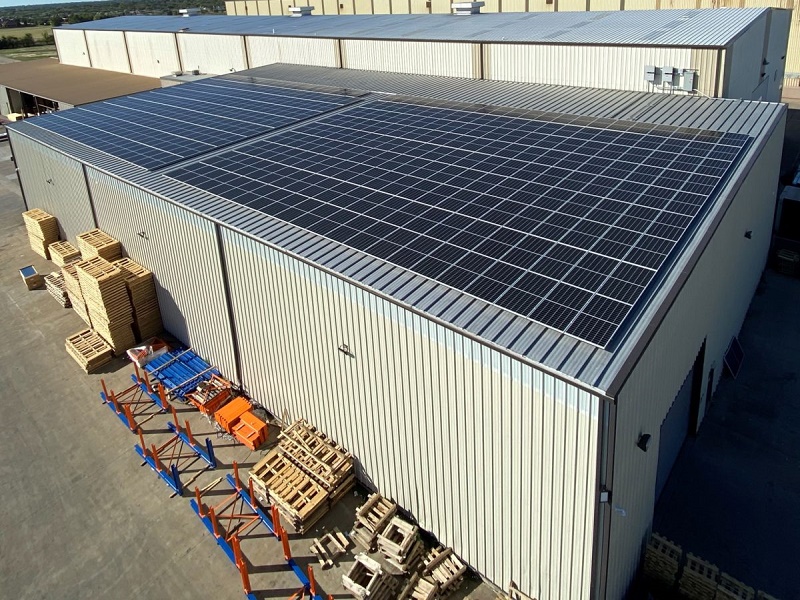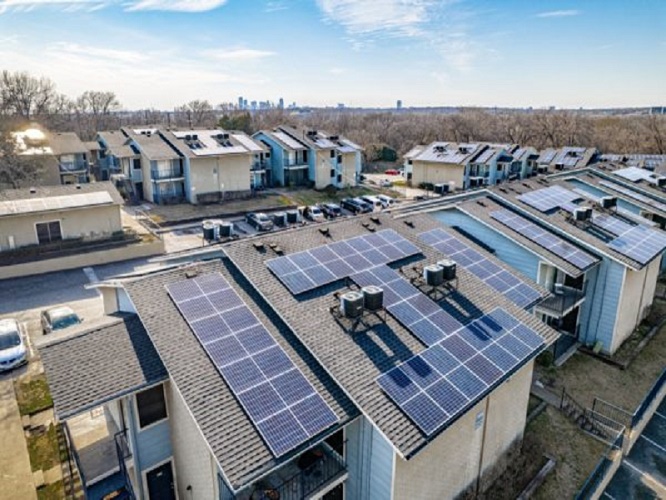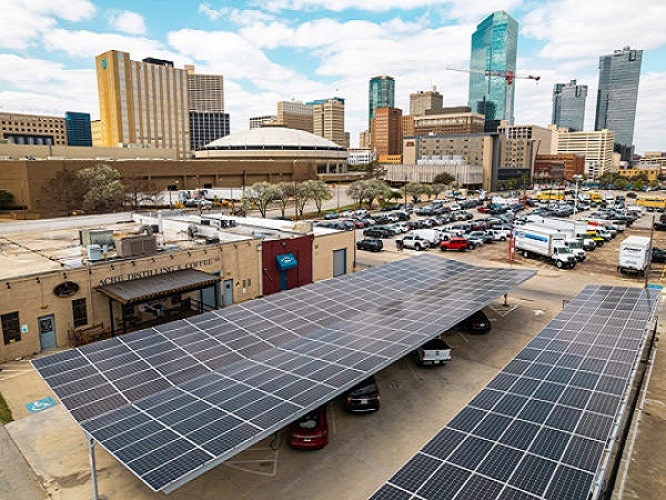Texas is a cornerstone market for the U.S. solar industry, with a nation-leading 36 GW expected to be installed over the next five years.
Solar installation on McElroy Metal’s Sunnyvale, Texas manufacturing plant.
No state has more solar capacity on the way than Texas in the coming years. The Energy Information Administration (EIA) projects as much as 36 GW of solar capacity will be added in the next five years, adding on to the 16 GW installed thus far and leapfrogging the Lone Star State over California in terms of installed capacity.
To date, Texas has enough solar capacity to power the equivalent of nearly 2 million homes. Over 10,000 Texans are employed by the solar industry, and the Solar Energy Industries Association (SEIA) reports that over $19 billion has been invested in the technology there through Q3 2022. Nearly 5% of Texas electricity is generated by PV.
Most of this capacity is being built at the utility-scale, with a large band of projects occupying the drier, sunnier western half of the state. While this region benefits from cheaper land and more solar irradiance, it comes with some challenges. Delivering electricity generated in the west to the high-population centers in the east requires substantial transmission capacity. Currently, Texas is dealing with growing problems of large projects “leapfrogging” interconnection queues, leading to grid congestion, reliability issues, renewables curtailment, and high costs from “congestion rent.”
Distributed rooftop solar on homes and businesses can help address these grid -scale problems. especially when paired with battery energy storage.
Incentives
Texas is a deregulated electricity market, which leads to a wide set of offerings depending on the utility service and retail energy provider selected. Though the state does not have a mandated net metering rule, many utilities offer net metering.
Net metering involves a utility crediting a customer’s bill for sending excess solar generation back to the grid. Utilities CPS Energy, El Paso Electric, and many others offer net metering. Prospective solar owners can understand the options available to them by using SolarReviews Solar Calculator, which creates production and savings estimates based on the assumptions of the local utility rates and programs.
Rebate programs also vary widely by utility. For example, CPS Energy customers are offered $2,500 for installing solar, with a $500 adder if the panels are locally sourced. Austin Energy provides a $2,500 rebate and has a sizeable tariff that pays $0.097 per kWh generated by the system.
Like many states in the union, Texas also offers a property tax exemption for solar panels. Zillow estimates that an owned solar array can boost a home’s value by an average of 4%, but tax assessments will not include this home improvement as an additional tax cost.
Many Texans live in areas controlled by homeowner’s associations (HOA). While HOA’s sometimes try to stand in the way of making changes like adding a solar array, Texas law grants home and business owners access rights. In general, HOAs may not prohibit or restrict property owners from installing a solar energy device, though there are some exceptions.
As with every U.S. state and territory, solar customers in Texas are offered the federal investment tax credit that covers 30% of the installed system costs. The Inflation Reduction Act of 2022 extended the 30% credit through 2032, offering long-term stability for the solar industry.
Landmark project
A 15 MW solar portfolio powers 16 Dallas-based Class B and Class C multifamily housing developments that house over 3,600 units. Property manager Granite Redevelopment Properties worked closely with Dallas’ own The Solar Company to develop the plan.
Chet Dyson, head of operations, shared with pv magazine that solar modules installed by The Solar Company range from 400 W to 450 W and are a mix of about two-thirds Canadian Solar panels and one-third Znshine. The inverters used were Solis single-phase inverters, with multiple inverters around 10 kW in size stacked to meet the need of the distributed system.
“When we ran the numbers for overall project returns, we were sold and wanted to go all in. Not only is it a responsible decision from an environmental standpoint, it also makes tremendous financial sense and adds millions of dollars to the overall value of our portfolio,” said Tim Gillean, president of Granite Redevelopment Properties.
The project is particularly beneficial to the “all bills paid” model that Class B and C multifamily housing units offer. The project cuts costs and provides price predictability for the landlord, while providing clean, local, and reliable power to the residents.
The 15 MW portfolio is distributed throughout numerous units and will also comprise solar carports that cover 2,000 parking spaces, providing the dual benefit of cooling the vehicles below while producing clean energy. The 40,000-panel system was completed in July 2022.
“Granite is setting a trend for owners of Class B and C apartments – and potentially the entire multifamily industry. By removing one of the biggest expenses for many landlords with rooftop solar panels and solar carports, the math is hard to argue with,” said Wildeman.
Wildeman said he sees bright days ahead for the Texas solar industry. He comes from a background of over 20 years in commercial real estate underwriting and has noticed a trend among his connections from his past career. “People are excited to talk about solar here in Texas,” he said.
Up next
Last stop along the 50 states of solar incentives tour brought us to Wisconsin Next, we will head to Michigan to review solar incentives and buildout.
Post time: Jan-12-2023



